Question of the Week: November 15, 2018
“What is wrong with my Indian hawthorn, and what can I do to stop it?”
This is Entomosporium fungal leaf spot, and you’ve probably seen it before. However, it’s more likely that you’ve seen it attacking redtip photinias. It has rendered them almost useless as landscaping shrubs in all parts of Texas.
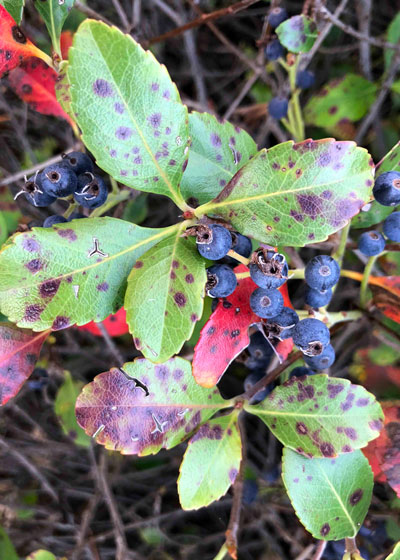
I took this photo at our son’s house last week. Sadly, it’s a fatal fungal leaf spot called Entomosporium and there’s little that can be done.
The short-form details…
• First symptoms are a few maroon “freckles” on the plants’ leaves.
• The spots become more prominent.
• Leaves begin to turn yellow, some even red.
• Leaves begin to fall as the plants thin out.
• Twigs, then branches die.
• No new growth replaces the dead areas.
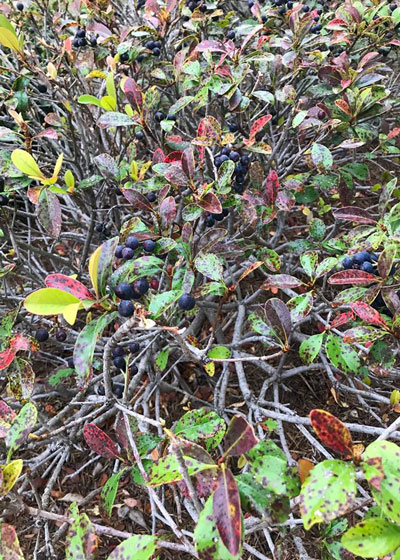
Facebook friend Rick C. posted this photo recently on my page. It shows how Entomosporium plays out as it destroys Indian hawthorn plantings.
• The plant dies entirely.
• The entire process takes 1-3 years on average.
• Entomosporium attacks in both humid and arid climates. I’ve seen it infect redtip photinias in the rain forest of western Washington, and I’ve seen it in the deserts of southern California. And, of course, we see it all across Texas.
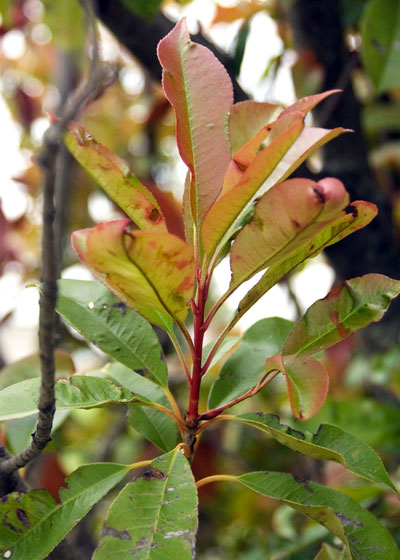
Entomosporium’s maroon spots show up on leaves of redtips.
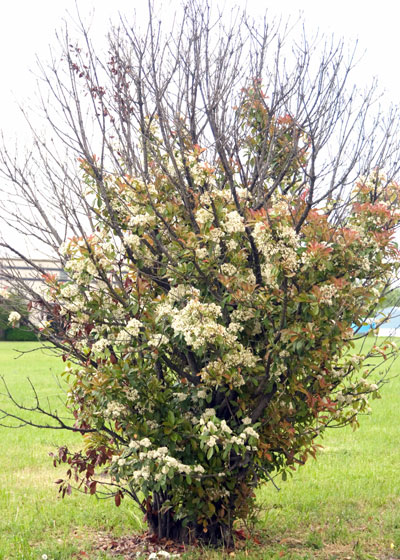
As it kills the plant, entire branches begin to die out. Eventually, the entire plant is lost (if it’s not taken out first).
• Redtip photinias and Indian hawthorns are closely related plants. The disease appeared first on redtips 30 or more years ago, but then it mutated and migrated onto Indian hawthorns. I took my Indian hawthorns out 25 years ago. However, the disease has only become rampant on Indian hawthorns in the past 5-10 years.
Now the sad news…
• There is no preventive treatment to help your plants avoid this disease.
• There is no cure to stop the spread of this disease once you see it.
So, where do you go now?
• Rather than fighting the hopeless battle with sprays that aren’t going to help, replace your infected plants with species that are not susceptible.
• To replace Indian hawthorns, I normally suggest Carissa hollies. They have about the same growth form, leaf size and texture. They’re well suited to sun, and they’re better suited to shade than Indian hawthorns. The only thing you give up with Carissa hollies will be the spring blooms you’d have on the hawthorns. But that bloom only lasts for a couple of weeks, and if you’re losing the plants anyway, it really doesn’t matter.
• To replace redtip photinias I’m again going to call on hollies. For medium-sized shrubs (7 or 8 ft. in height and width) try Willowleaf hollies. If you need something taller, Nellie R. Stevens hollies are the best tall, screening shrubs we have available.
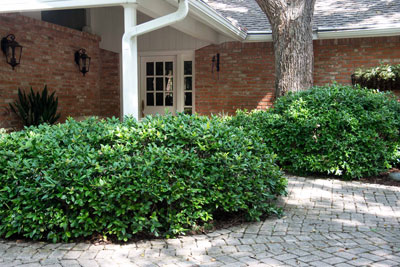
Entry at our home, with Carissa hollies to the left where Indian hawthorns once grew until Entomosporium ruined them. Dwarf Chinese hollies are to the right.
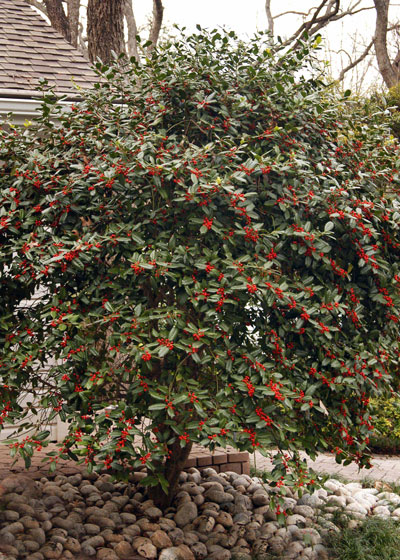
Nellie R. Stevens holly makes a lovely screening shrub replacement for redtip photinia.
